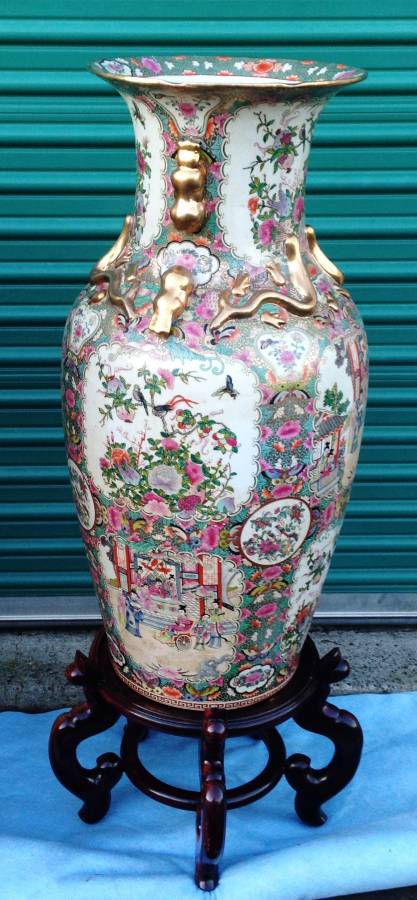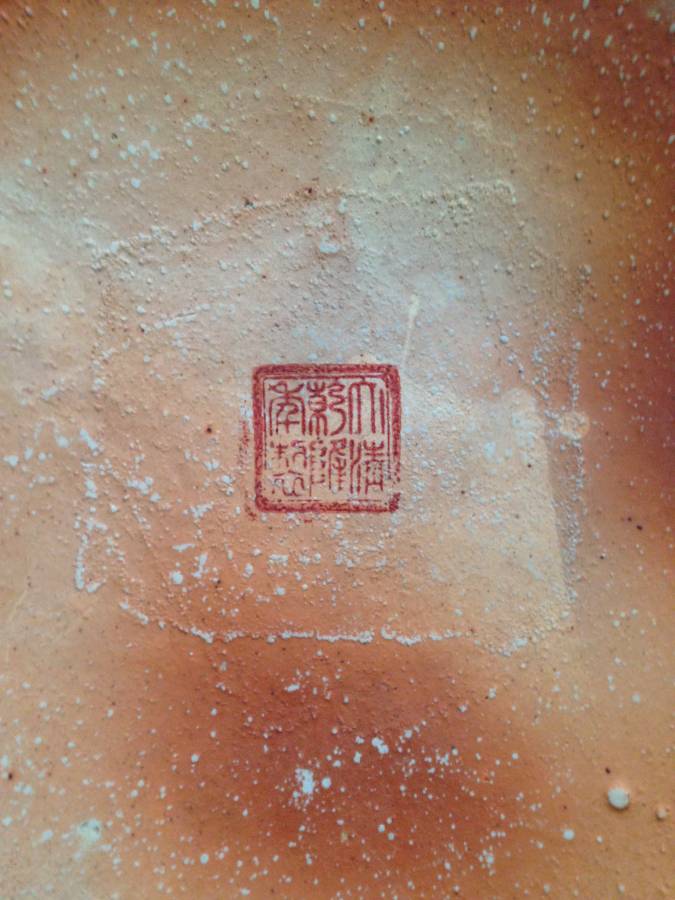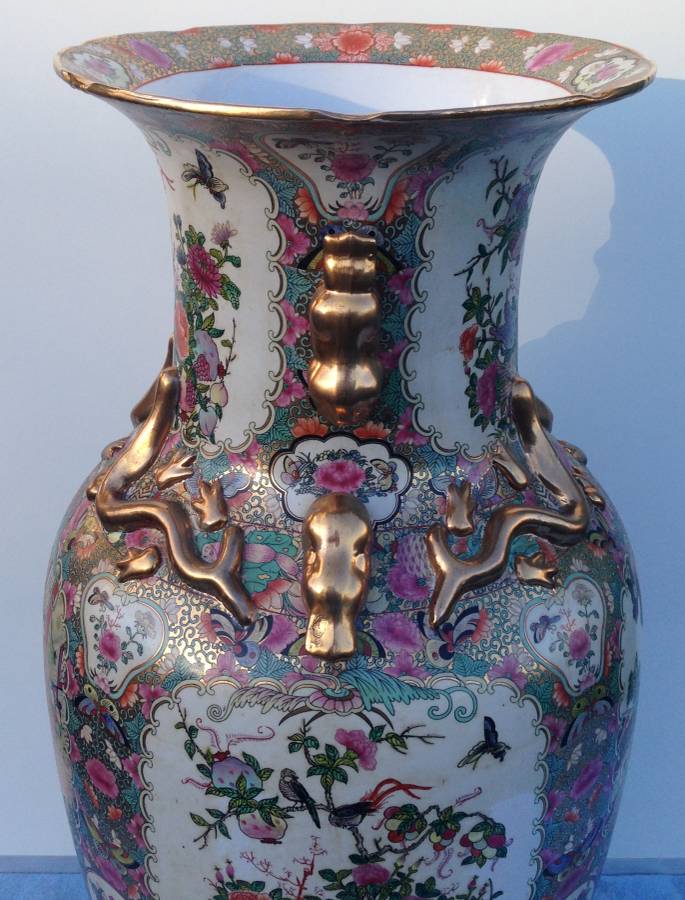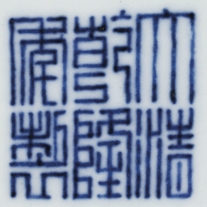
|
Subject:Re: Satsuma vase
Posted By: Bill H Wed, Dec 27, 2017
Thanks Martin for the reminder that this vase has a faux Qianlong mark and not the so-called faux Tongzhi mark, which was the last and most lasting thing to catch my eye when comparing my thoughts on the subject against the gotheborg.com data. However, I'll stick with the 70s to 90s period for dating, because similar Chinese vases having such relatively well applied and appealing transfer decoration were on display at the Bangkok weekend market and some street shops when I was living in Thailand in the early 90's.
Differences in the real and fake Qianlong marks sort of fade to mootness when you consider how the Qianlong Emperor died some 60 years before rose medallion was produced as the pattern we still recognize today. Moreover, the Macao factory made this faux vase somewhere around 120 years or more after that first real rose medallion was produced. And lest we forget, porcelain decoration using printed transfers was invented in Liverpool in England in the 1750's and spread thereafter to the Continent. However, while it was adopted fairly early by the insular Japanese, Chinese porcelain producers only began using the process commercially in the post-Qing Republic era, when the manpower needed to make and decorate porcelain was decimated by the outbreak of civil and world wars.
But I predict those decorating factories will totally ignore these three alleged strikes against them.
Cheers,
Bill H.


|
 Satsuma vase
Satsuma vase  ( China & Japan ) - John - Dec 25, 2017 (12:57 AM)
( China & Japan ) - John - Dec 25, 2017 (12:57 AM)  Re: Satsuma vase - Bill H - Dec 26, 2017 (05:13 AM)
Re: Satsuma vase - Bill H - Dec 26, 2017 (05:13 AM)  Re: Satsuma vase
Re: Satsuma vase  - Martin Michels - Dec 26, 2017 (05:44 AM)
- Martin Michels - Dec 26, 2017 (05:44 AM)  Re: Satsuma vase - Bill H - Dec 27, 2017 (05:52 PM)
Re: Satsuma vase - Bill H - Dec 27, 2017 (05:52 PM)  Re: Satsuma vase - Bokaba - Dec 27, 2017 (12:51 AM)
Re: Satsuma vase - Bokaba - Dec 27, 2017 (12:51 AM) 


